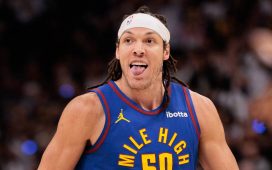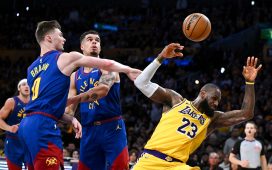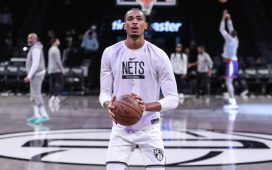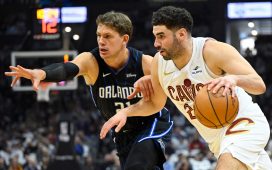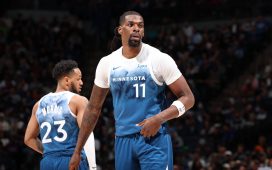Kobe Bryant was 17 when he worked out for the Phoenix Suns before the 1996 N.B.A. draft. Jerry Colangelo, who owned the team at the time, already knew a great deal about Bryant, who had emerged from Lower Merion High School in suburban Philadelphia as the flashiest phenom of his generation.
Colangelo knew, for example, that Bryant had spent part of his childhood in Italy. Sure enough, there was something about Bryant’s demeanor, the way he carried himself, the way he spoke, that struck Colangelo as different. Bryant was not a typical teenager, and Colangelo suspected that had a lot to do with his childhood.
“He was becoming a man of the world as a young guy,” Colangelo said in a recent telephone interview from his home in Phoenix. “And there’s a maturity that goes along with that. Once you travel and you’re involved in other cultures, you just kind of grow up differently and more quickly, and probably with a little more depth.”
The workout itself was spectacular, Colangelo said — so spectacular that it was the best predraft workout Colangelo had ever seen.
“He had this self-confidence,” Colangelo said. “He knew he was special. He knew he was good — really good. And then you add to that the incredible desire he had to be the very best. It was the combination. It’s one thing to have confidence. It’s another thing to be able to back it up with talent.”
Colangelo saw it all — and even found an opportunity to nurture his relationship with Bryant through their association with U.S.A. Basketball, which culminated in a gold medal at the 2008 Summer Olympics in Beijing.
Another punctuation of sorts will come later this year when Colangelo, in his role as chairman of the Naismith Memorial Basketball Hall of Fame, is scheduled to preside over Bryant’s posthumous induction. Bryant, who died in a helicopter crash near Los Angeles on Jan. 26, is part of a celebrated class that also includes Tim Duncan, Kevin Garnett and Tamika Catchings.
Bryant retired in 2016 with five championships and all the gluttonous statistics befitting an 18-time N.B.A. All-Star. But far beyond his longevity and the production he crammed into a 20-year career, Bryant will be remembered for the moments he created. He was the rare player capable of turning basketball into theater.
“He was the fiercest competitor I ever played against,” Michael Redd, the retired shooting guard, said in a telephone interview. “He made me a better basketball player.”
“Mamba out,” Bryant told the crowd afterward as he dropped the mic onto the court at Staples Center.
For the first half of Bryant’s career, Colangelo had to watch Bryant’s handiwork from a distance, and for a rival team. They would exchange pleasantries — “a nod hello, a shaking of hands,” Colangelo said — but that was pretty much the extent of their involvement with each other.
That all changed in 2006. A couple of days before Bryant would score 81 points against the Toronto Raptors, Colangelo invited him to his office in Phoenix. The Lakers were in town to face the Suns, but Colangelo had something else on his mind: He wanted Bryant to represent the United States at the 2008 Olympics.
“I knew in advance that he really wanted to be a part of U.S.A. Basketball,” said Colangelo, who had taken over as managing director of the men’s national team after its disastrous third-place finish at the 2004 Summer Olympics in Athens — a far cry from the standard of excellence set by Michael Jordan and the so-called Dream Team that won gold in 1992. “It was on his list of things that he wanted to accomplish, because he had never played for U.S.A. Basketball. No junior teams or anything like that. So it was important to him, and his commitment was huge.”
Bryant’s desire to be the team’s driving force became clear to Colangelo at the 2007 FIBA Americas Championship in Las Vegas, where he scouted a couple of tournament games from the stands with Bryant.
“He had so much insight,” Colangelo recalled.
At the team’s pre-Olympic training camp the following summer, Bryant was the first player to arrive. In fact, he beat most members of the coaching staff — and was getting in workouts at 5:30 a.m. The rest of the team, which included the likes of LeBron James, Carmelo Anthony and Dwyane Wade, soon followed his lead.
“I think Kobe challenged everybody,” said Jim Boeheim, one of the team’s assistants and the head coach of men’s basketball at Syracuse. “He was like, ‘I’m going to defend the toughest guy on every team, I’m going to push everyone, so just come along with me.’ And he did that from Day 1.”
For Colangelo, it was a window into greatness. The foundation for all of Bryant’s feats — the 81-point game, the scoring titles, the series-clinching jump shots, the three championships he had already won with the Lakers — was his work ethic and desire. The spectacular was rooted in the mundane, in the monotony of hard labor.
At the Olympics, Bryant helped lead the way in the gold-medal final against Spain — and did it with flair. With just over three minutes remaining in a tight game, Bryant effectively sealed the win with a 4-point play. He raised an index finger to his lips to silence the Spanish fans in the crowd.
A few minutes later, as the Americans celebrated on the court, Colangelo embraced the player he had once dreamed of drafting. The wait, in some ways, was worth it.
“How often does someone have an objective, a goal, and have it perfectly executed?” Colangelo asked. “It was just so special.”
